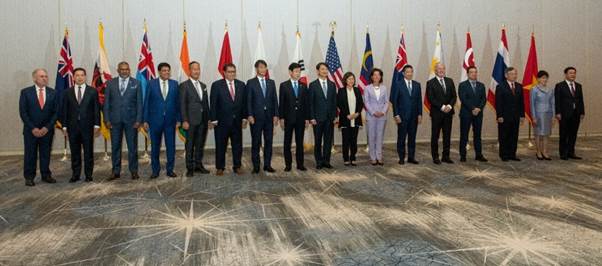Free Courses Sale ends Soon, Get It Now


Free Courses Sale ends Soon, Get It Now



Copyright infringement not intended
Context: India stayed out of the joint declaration on the trade pillar of the U.S.-led Indo-Pacific Economic Framework ministerial meet in Los Angeles, with Union Commerce Minister Piyush Goyal citing concerns over possible discrimination against developing economies.
Details:
Analysis:
https://www.pib.gov.in/PressReleasePage.aspx?PRID=1858243
© 2024 iasgyan. All right reserved